Boldness Over Fear
I first came across Catherine Cassidy’s work after purchasing Australian Abstract, Amber Creswell Bell’s fabulous book - a vivid survey of over forty contemporary Australian abstract painters. Instantly, I felt drawn to Catherine’s work - her colour sensitivity, her process, her deep connection to the land, and her interest in Taoist painting philosophy. There was something fearless in the way she worked—playful, instinctual, free.
At the time, I was rereading The Artist’s Way, filling my morning pages with thoughts and musings, when I wrote:
“I choose boldness over fear.”
As soon as the words were on the page, I felt the challenge staring back at me. Really? I thought. Then prove it.
I had been following Catherine on Instagram when I saw that she had recently moved to Castlemaine—a town not far from where I live. Reach out to her. What do you have to lose?
So, I did.
I sent her a very nice message, and to my delight, she agreed to meet. That December morning turned into a four-hour conversation—wandering through the Art Puff Gallery and Castlemaine Art Museum, sharing stories over lunch. By the end of it, I knew: this was the beginning of something important. I asked her if she would mentor me.
A few days later, she said yes.
At our very first session, Catherine wrote three words on a scrap of paper and stuck it to the wall:
“Fail, fail, fail.”
A reminder to stop taking myself so seriously. That mistakes often lead to breakthroughs.
For the first month, we met weekly, building momentum. Now, we meet monthly, allowing space for me to experiment, explore, and play. Catherine is guiding me into abstraction—helping me unearth my own visual language. I’m learning about the energy of a brushstroke (chi), the micro and macro found in a landscape, the magic of collage, the weight of mark-making. I’ve extended my paintbrushes, attaching them to fallen branches to limit the control and predictability of my brushstroke. I’m learning to step back and pause before responding. Too often I have overworked and ruined a perfectly good painting. I’m daring myself to let go of the familiar and tap into my inner sight and emotions when piecing together a composition. It’s a lot to digest. Slowly, slowly. Showing up is key.
When thinking about boldness and creating opportunities I am reminded of something I once read …
“Conditions are never perfect. ‘Someday’ is a disease that will take your dreams to the grave with you... If it’s important to you and you want to do it ‘eventually,’ just do it and correct course along the way.” —Tim Ferriss
The fact is a little bit of courage goes a long way. The only thing stopping you achieving your dreams is yourself. Get creative with problem solving, it feels good to actively pursue the life you want to live. I’ve got a list on my phone of other things I’d like to see happen this year. I also like making a vision boards - a visual reference of my desires. You can do this easily on the canva app.
My list:
Convert the garage into a studio so I can work at a larger scale. We cleaned it out over the Summer break. A full trailer load went off to the transfer station. Old cabinets full of rat poo, spider webs covered the ceiling, it was so dirty. This month we finally constructed the hanging system, I’ve been dreaming of so I can work on multiple pieces at a time, directly on the wall - it’s genius. It definitely helps having a handy hubby. We’re now in the process of cleaning up the large shed adjoining my studio, the ‘man cave.’ I dream of us both working side by side on creative projects in the future.
Spend an hour in silence somewhere on the property without my phone. Invite the sounds of the birds, the wind, the sunshine into my body. A practice inspired by one of my favourite Substackers,
Contact a list of 7 artists who live and create in relationship with the land, interview them and share their stories. Feel free to send suggestions of anyone you want to know more about.
Keep workshopping your dream of sharing the property as a place for creative gathering. Combining all my loves, the land, art making, creative practice, meditation - providing creative opportunities & uplifting others.
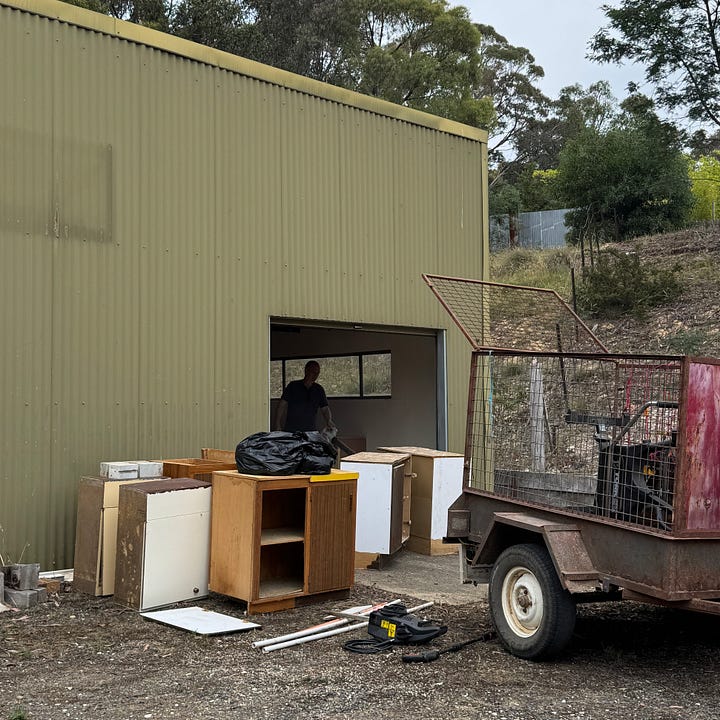
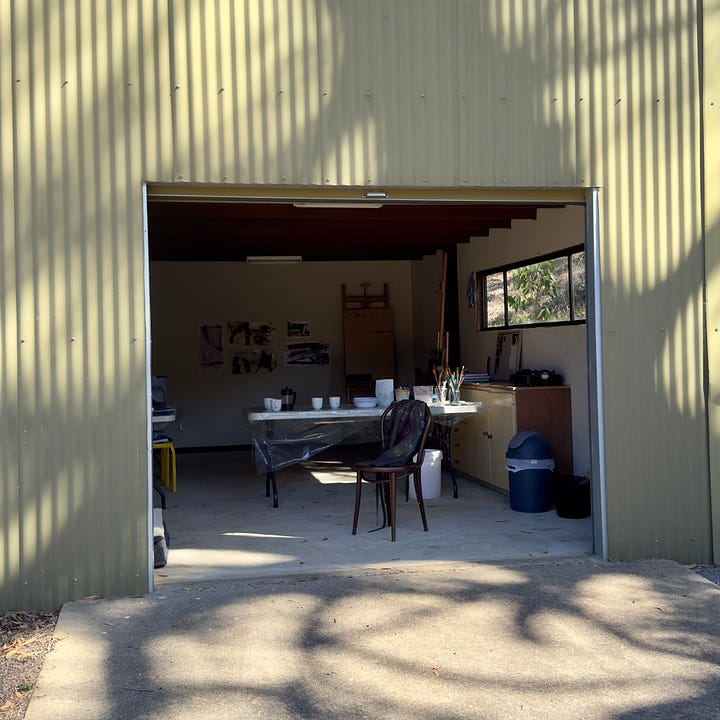
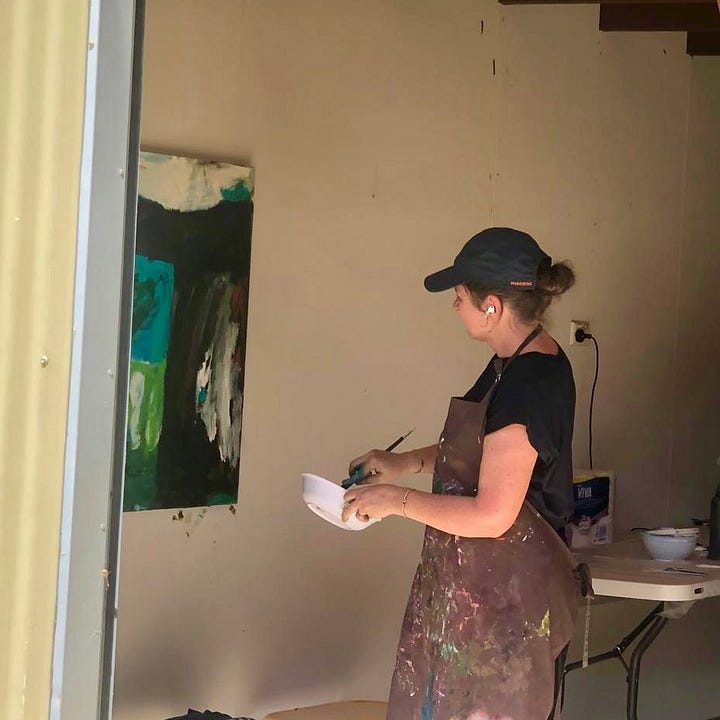
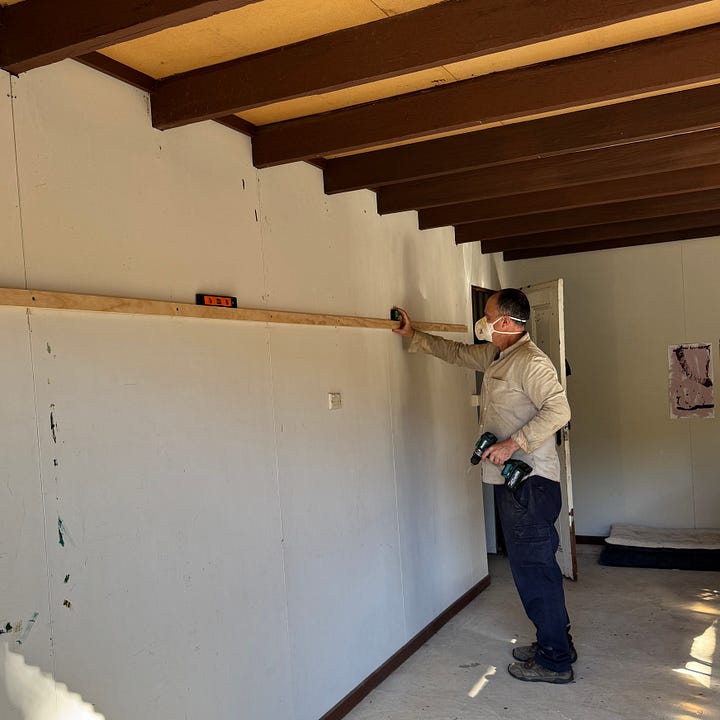
Now, I’d love to hear from you—when was a time you chose boldness over fear? What did you learn from the experience?
Before you go make sure you read my first artist interview below. It seems fitting that my first interview in this series would be with the wonderful Catherine Cassidy. I hope you enjoy it. Let me know.
Warmly,
Samantha
ARTISTS WHO CREATE IN CLOSE RELATIONSHIP WITH THE LAND
Based in Castlemaine on Dja Dja Wurrung Country, Catherine Cassidy paints landscapes shaped by deep time, elemental forces, and quiet attention. What began as a plein air practice in remote parts of Australia has evolved into something more abstract—more about presence than place, energy than form.
In this conversation, we talk about the influence of Taoist philosophy, the strange comfort of being insignificant in the desert, and what it means to sit with the land, rather than simply depict it.
An Interview with Catherine Cassidy — May 2025
On landscape, abstraction, and the quiet voice of the land
1. Can you describe your relationship with the land—and when you first recognised it as central to your creative expression?
I’ve always painted. While other kids were at Girl Guides or on sporting fields, I was at home with my own little table, making and drawing anything I could think of… then painting in oils.
I was a bit of a spaced-out kid, zooming across the landscape on many road trips—both as a child and later as an adult. I think the long hours of travel it takes to get anywhere in Australia give you a deep understanding of scale, time, and perseverance. To endure that—days on end in a hot tin box on wheels—is to begin to understand that all that space out there has no clear beginning or end. You start to grasp what immersion and unity mean. Those are important things in painting.
I don’t think of the land as a ‘thing’ out there to go and visit. It’s something that inhabits me and is never far away. I can call on it anytime, spend time with it without needing to go anywhere.
Light, air, the elements—these are central to me. They draw me back again and again, allowing me to reinterpret and fix these places into painted images. They are the core elements, the glue that holds everything together.
2. Is there a particular place that continues to call you back in your work? What is it about this place that holds you?
My favourite places are definitely the most inhospitable—deserts, gibber plains, mesas, arid landscapes worn down by sun, rain, and wind. I like the skeletal—the bones of the land—and mysterious things like bubbling desert springs, ephemeral lakes, vague traces of lost water, clay pans baked and cracked, empty creek beds. Places where Deep Time has shaped the forms.
And the colours—so stunning in the desert. Everything simplified, reduced, and powerful in that reduction.
There’s a refreshing sense of insignificance in these places. They won’t validate you. Bizarrely, their total indifference becomes your companion. That comfortable non-presence sees you as a witness, a little instrument.
It’s a huge feeling—being accompanied by something so much bigger than yourself. You’re immersed and swallowed up by it as it continues its unbroken journey of change.
Trees fall, water arrives and disappears, the sun and stars wheel across the sky. I don’t think there’s any great cosmic meaning in all this—it just is.
No time. No boundaries.
This teaches you to be totally present.
There is no other time of existence.
3. What does your painting process look like when you're out in the landscape? Can you share the rhythm or feeling of that experience? What are your favourite materials to take with you into the field?
I take very little—basic paints, a few drawing materials, some paper, and maybe small wood panels if there’s not too much walking. These limited means give me great fluidity. I find minimal choice increases my inventiveness.
I’m just trying to fix the energies around me into a communicative whole.
There’s a lot of staring and thinking.
4. Can you talk more about ‘the place of nothing and everything’? How does one journey deep within to arrive at this place?
‘Nothing and Everything’ is a Taoist concept. It’s about how we look at the natural world and its myriad forms—how we relate to them, how we communicate them.
In Western art, we’re used to identifying and naming things: a tree, a mountain, a ravine, a river.
But imagine all that differentiation gone. Imagine that all things don’t necessarily exist separately, but with, throughout, and because of each other. That they have no fixed defining qualities. In that very lack of form, something seemingly containing nothing can actually contain everything.
Take collage, for instance—what happens when familiar things are interrupted and reassembled? We see a new whole.
Description fades, and something more communicative arises. I say “more communicative” because it has no recognisable boundaries—and in that freedom, it becomes part of something much larger.
In its lack of resolution, it holds the present moment. It neither explains nor describes itself.
It becomes a plastic entity—alive in its relationship to everything else.
It contains nothing, yet everything.
5. Can you name two artists who have deeply inspired or influenced your journey—and in what ways?
My two favourite artists are Antoni Tàpies and Rose Wylie.
You probably couldn’t find two more disparate artists—one a matter painter, the other presenting the everyday, the banal.
But I’m drawn to artists not for their subject matter or technique, but for their thinking, their powers of invention, their wit and humanity.
How they communicate is what matters.
These two stand out for their powerful intent. That’s what excites me—the longevity of purpose, and how that rings through the work.
6. What do you hope others might sense or feel when they spend time with your work?
I’d like to think my paintings carry something visceral—energies and forces we all understand.
It’s all about communication. That’s all.
7. If the land could speak through your hands, what do you imagine it might want to say?
The voice of the land in a country like this would be old and wise.
I hope I’d hear it say, “Welcome… come and sit with me for a while.”
But somehow, I think I’d just hear a very soft wind in the desert oaks.
8. Lastly, can you let us know of any upcoming shows we need to diarise?
I’ll be showing new work this November at Grainger Gallery, Canberra.
Stay tuned for updates.
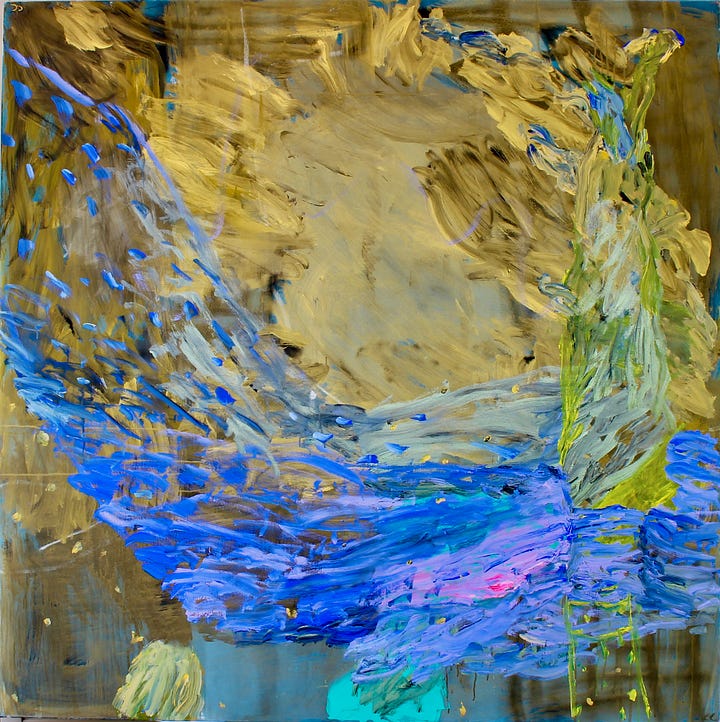
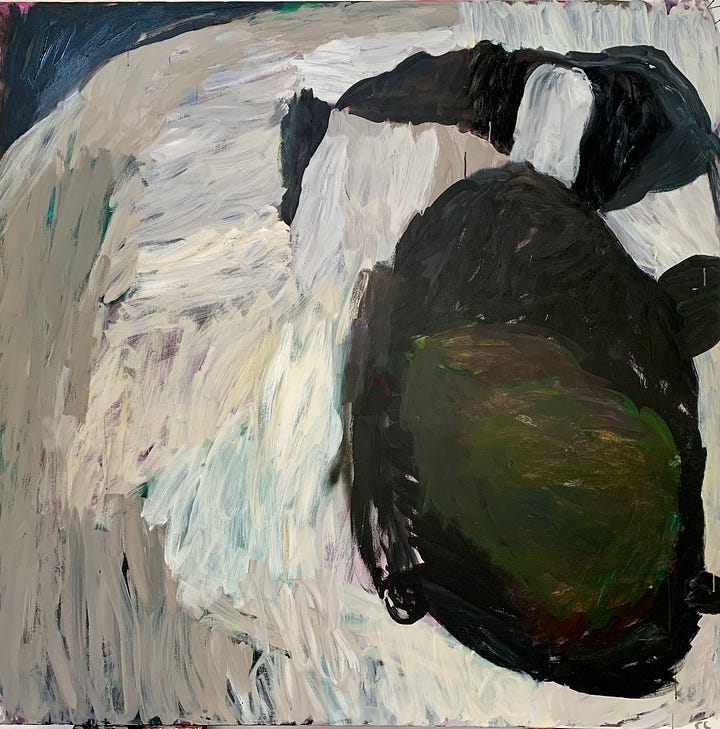
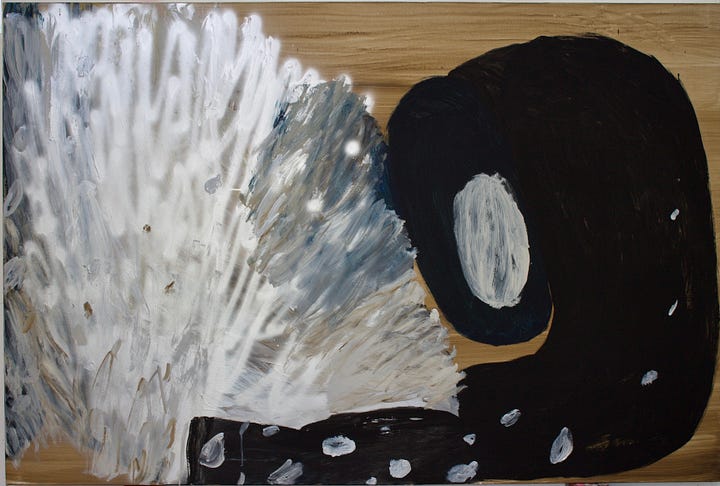
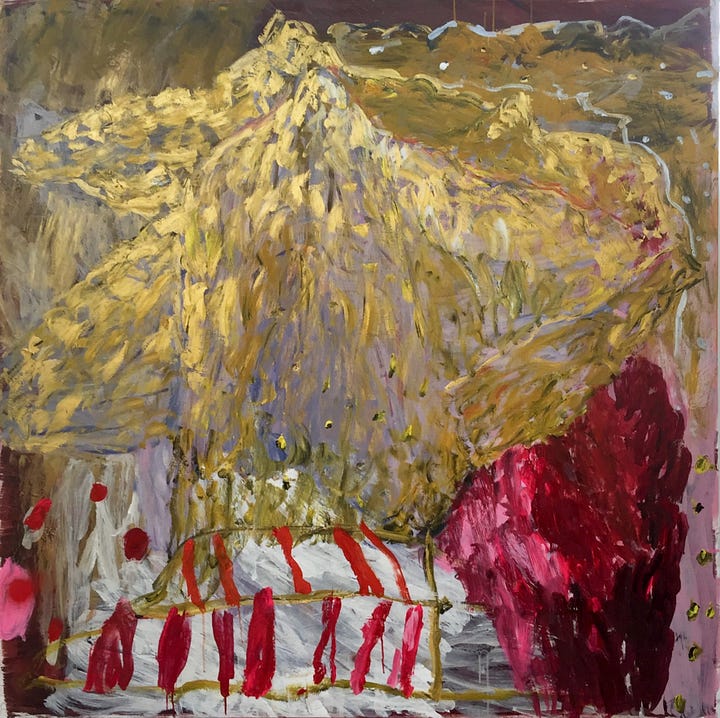
Follow Catherine on Instagram: @catherinecassidyartist
Recommended Reads:
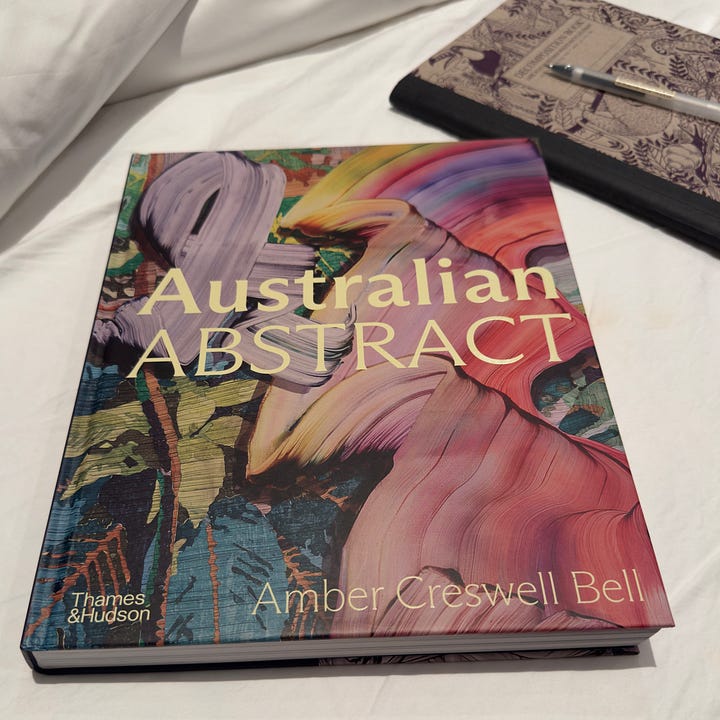
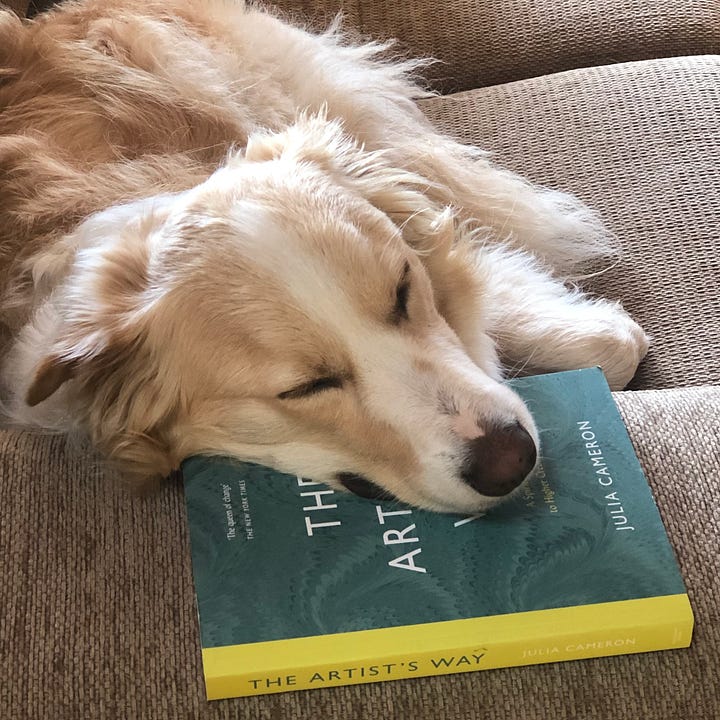
Australian Abstract by Amber Creswell Bell
The Artist’s Way by Julia Cameron
Recommended Podcast Episodes:
Dialogues: The David Zwirner Podcast - Joan Mitchell at 100 with Julie Mehretu and Eileen Myles
Just Make Art: David Lynch on Ideas, Meditation and Artistic Freedom.
The Great Women Artists by Katy Hessel - Rose Wylie
Thanks for reading Out in the Wilds! Subscribe for free to receive new posts and support my work.






